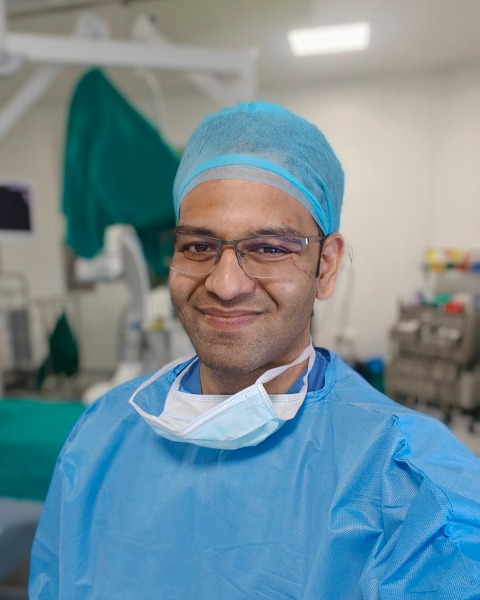Tuesday Poster Session
Category: Liver
P5902 - Economic Burden of Decompensated Liver Cirrhosis: A Micro-Costing Analysis
Tuesday, October 28, 2025
10:30 AM - 4:00 PM PDT
Location: Exhibit Hall

Dronamraju Sujay Prabhath, MBBS, MD (he/him/his)
Kasturba Medical College of Manipal
Guntur, Andhra Pradesh, India
Presenting Author(s)
Dronamraju Sujay Prabhath, MBBS, MD1, Shiran Shetty, MBBS, MD, DM2, Siddheesh Rajpurohit, PhD3, Balaji Musunuri, DM4
1Kasturba Medical College of Manipal, Guntur, Andhra Pradesh, India; 2KASTURBA MEDICAL COLLEGE,MANIPAL, Manipal, Karnataka, India; 3Kasturba Medical College of Manipal, Manipal, Karnataka, India; 4Kasturba Medical College, Manipal, Manipal, Karnataka, India
Introduction: Liver diseases, particularly decompensated cirrhosis, represent a significant global public health challenge, with substantial clinical and economic implications. This study aimed to comprehensively analyze the direct and indirect costs incurred by patients with decompensated liver cirrhosis over a six-month period, offering insights into its socioeconomic impact
Methods: A prospective 6-month follow-up study was conducted using a micro-costing approach to quantify expenses. Direct costs, including physician consultations, medications, diagnostic tests, and hospitalizations, were recorded alongside indirect costs such as travel expenses, hospital visits, admissions, and associated impacts on employment and productivity. All values presented are expressed as medians and represent amounts in Indian rupee (INR).
Results: The cohort comprised 43 patients with decompensated liver cirrhosis, predominantly male (88.4 %), with a median age of 53 years. Alcohol-related liver disease (58 %) and non-alcoholic fatty liver disease (NAFLD, 20.9 %) were the leading etiologies.
Direct Costs: Physician consultation: ₹ 1,750 (1,350 – 2,000), Laboratory investigations: ₹ 7,966 (6,908 – 9,008), Upper gastrointestinal endoscopy and variceal ligation: ₹ 4,600 (3,450 – 7,360), Ascitic tapping: ₹ 6,000 (4,800–8,659), Pharmacy costs: ₹ 41,210 (34,911–49,488), Hospital admission: ₹ 43,161 (30,444 – 59,611)
Indirect Costs: Travel expenses: ₹ 850 (195 – 1,912), Number of hospital visits: 7 (6 – 8), Number of hospital admissions: 2 (1 – 3)
Alcohol-related etiology was significantly associated with higher costs (p = 0.012), with an odds ratio of 3.22 (95 % CI: 1.09 – 7.33).
Discussion: The findings of this study underscore the considerable financial burden borne by patients with decompensated liver cirrhosis, with both direct and indirect costs contributing substantially to the overall economic impact. Alcohol-related cirrhosis was identified as a significant driver of increased expenditures. These results highlight the urgent need for targeted financial support mechanisms, enhanced preventive strategies, and policy interventions to mitigate the socioeconomic burden on affected individuals and healthcare systems
Disclosures:
Dronamraju Sujay Prabhath indicated no relevant financial relationships.
Shiran Shetty indicated no relevant financial relationships.
Siddheesh Rajpurohit indicated no relevant financial relationships.
Balaji Musunuri indicated no relevant financial relationships.
Dronamraju Sujay Prabhath, MBBS, MD1, Shiran Shetty, MBBS, MD, DM2, Siddheesh Rajpurohit, PhD3, Balaji Musunuri, DM4. P5902 - Economic Burden of Decompensated Liver Cirrhosis: A Micro-Costing Analysis, ACG 2025 Annual Scientific Meeting Abstracts. Phoenix, AZ: American College of Gastroenterology.
1Kasturba Medical College of Manipal, Guntur, Andhra Pradesh, India; 2KASTURBA MEDICAL COLLEGE,MANIPAL, Manipal, Karnataka, India; 3Kasturba Medical College of Manipal, Manipal, Karnataka, India; 4Kasturba Medical College, Manipal, Manipal, Karnataka, India
Introduction: Liver diseases, particularly decompensated cirrhosis, represent a significant global public health challenge, with substantial clinical and economic implications. This study aimed to comprehensively analyze the direct and indirect costs incurred by patients with decompensated liver cirrhosis over a six-month period, offering insights into its socioeconomic impact
Methods: A prospective 6-month follow-up study was conducted using a micro-costing approach to quantify expenses. Direct costs, including physician consultations, medications, diagnostic tests, and hospitalizations, were recorded alongside indirect costs such as travel expenses, hospital visits, admissions, and associated impacts on employment and productivity. All values presented are expressed as medians and represent amounts in Indian rupee (INR).
Results: The cohort comprised 43 patients with decompensated liver cirrhosis, predominantly male (88.4 %), with a median age of 53 years. Alcohol-related liver disease (58 %) and non-alcoholic fatty liver disease (NAFLD, 20.9 %) were the leading etiologies.
Direct Costs: Physician consultation: ₹ 1,750 (1,350 – 2,000), Laboratory investigations: ₹ 7,966 (6,908 – 9,008), Upper gastrointestinal endoscopy and variceal ligation: ₹ 4,600 (3,450 – 7,360), Ascitic tapping: ₹ 6,000 (4,800–8,659), Pharmacy costs: ₹ 41,210 (34,911–49,488), Hospital admission: ₹ 43,161 (30,444 – 59,611)
Indirect Costs: Travel expenses: ₹ 850 (195 – 1,912), Number of hospital visits: 7 (6 – 8), Number of hospital admissions: 2 (1 – 3)
Alcohol-related etiology was significantly associated with higher costs (p = 0.012), with an odds ratio of 3.22 (95 % CI: 1.09 – 7.33).
Discussion: The findings of this study underscore the considerable financial burden borne by patients with decompensated liver cirrhosis, with both direct and indirect costs contributing substantially to the overall economic impact. Alcohol-related cirrhosis was identified as a significant driver of increased expenditures. These results highlight the urgent need for targeted financial support mechanisms, enhanced preventive strategies, and policy interventions to mitigate the socioeconomic burden on affected individuals and healthcare systems
Disclosures:
Dronamraju Sujay Prabhath indicated no relevant financial relationships.
Shiran Shetty indicated no relevant financial relationships.
Siddheesh Rajpurohit indicated no relevant financial relationships.
Balaji Musunuri indicated no relevant financial relationships.
Dronamraju Sujay Prabhath, MBBS, MD1, Shiran Shetty, MBBS, MD, DM2, Siddheesh Rajpurohit, PhD3, Balaji Musunuri, DM4. P5902 - Economic Burden of Decompensated Liver Cirrhosis: A Micro-Costing Analysis, ACG 2025 Annual Scientific Meeting Abstracts. Phoenix, AZ: American College of Gastroenterology.
